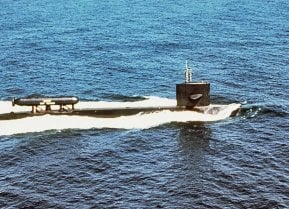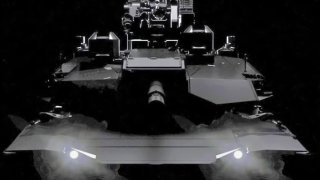Russia: Still a Threat After the Ukraine War? You Better Believe It
The end of the Ukraine war will certainly create a new strategic situation for NATO requiring the adjusted approach with the old policy patterns voided. No matter how the member states’ internal dynamics will be, the post-war reality will require new instruments to handle.
“No illusions, Gentlemen!” No Breather for NATO After the Ceasefire in Ukraine: The quote referred to in the subtitle to the left, being originally a response from Tsar Alexander II to Polish noblemen asking him about perspectives for a softer line on Poland within the Russian Empire may serve as a motto for NATO-Russia relations after the Ukraine war, applicable regardless of the arrangements on conditions to end the conflict. One can hardly see any premises for a substantial shift in Russian foreign policy vision, unlike clear signs of the opposite tendency.
As the Ukraine war continues, NATO member states face hostile Russian acts below the threshold of war. This is about psyops: disinformation campaigns, electoral interference, instrumentalized migration, and military drills close to NATO territory. Not to mention, territory infringements include Russian missiles or unmanned aerial vehicles (UAVs), subversion, cyberattacks, and GPS jamming. Such acts, due to their cheapness, efficiency, and plausible deniability, are likely to compensate Russia for its relative decline in military power as a result of the equipment losses in Ukraine.
It is hardly anything new, rather more of the same as what the Russian intelligence is well known for. But this will certainly require building collective resilience by NATO member states and like-minded countries in a more systemic, coherent, and consistent way than ever before. This is not only a perspective for the future but rather an extrapolation of the more and more defiant reality NATO already faces.
While only intelligence agencies are well-informed enough to assess whether the risk of NATO-Russia military confrontation has been real ever after February 24, 2022, since obvious “smoking guns” are few, it is unlikely to increase right after the war, given the related loss of Russian military resources and a vast part of Ukraine remaining in all likelihood a NATO buffer zone.
This does not mean, however, that there is no need to maintain robust deterrence capabilities anymore, especially in the Eastern Flank. The conduct of the Ukraine war has confirmed the worst fears of both NATO member states, at least some of these, and Russia. The claims about Russian imperialism, hostility, and brutality found conclusive proof. Making any arrangements with an actor deliberately breaking the agreed rules, such as the basic principles of the UN Charter or international humanitarian law indicates these norms have to rely on something more than only the goodwill of contracting parties.
On the other hand, in response to its hostile actions, Russia received the military build-up in NATO’s Eastern Flank, further enlargement of the alliance and the status of “the most significant and direct threat”, as named in the 2022 Strategic Concept. This might be considered a self-fulfilling prophecy since the Kremlin has been using anti-NATO narratives for almost two decades. The deep mutual distrust is thus expected to be lasting long after the war.
But many factors likely to determine the post-war stability in NATO-Russia relations lie beyond Russia and Ukraine. The internal political dynamics in NATO member states may vary in terms of willingness to cooperate with Russia, especially when like-minded political groups rise in influence in almost all of these.
The cynical “pragmatism,” or rather their “fake it until you make it” approach of such current or future leaders might ground a new appeasement in these relations at the expense of the most threatened states. Moscow certainly awaits intra-NATO divisions to exploit these by its political objectives. Needless to say, this is about possible American isolationism in particular. The Eastern Flank would certainly experience direct consequences, which would mean many kinds of Russian provocations. The situation in third countries such as Moldova, Belarus, Georgia, and Armenia given their significance as areas of Russian military deployment, is also noteworthy as being among the potential stabilizing or destabilizing factors after the war regionally.
The end of the Ukraine war will certainly create a new strategic situation for NATO, requiring the adjusted approach with the old policy patterns voided. No matter how the member states’ internal dynamics will be, the post-war reality will require new instruments to handle. Given the nature of the threat, this is an opportunity for NATO and EU to find a functional division of responsibility with NATO as a basis for collective defense and deterrence-related tasks and for the EU to address non-military security challenges, including cybersecurity, hybrid threats, instrumentalized migration or energy policy, together with a developing European defence-industrial base. The multidimensional resilience of the West is a key to stability in Europe as soon as the Ukraine war ends.
About the Author:
Piotr Śledź is an assistant professor at the University of Warsaw (Department of Strategic Studies and International Security, Faculty of Political Science and International Studies). His research concerns armed conflicts, arms control, the defense industry, and the EU’s Common Security and Defense Policy.
Image Credit: Creative Commons and/or Shutterstock.


